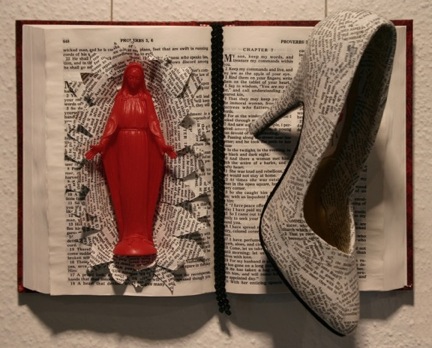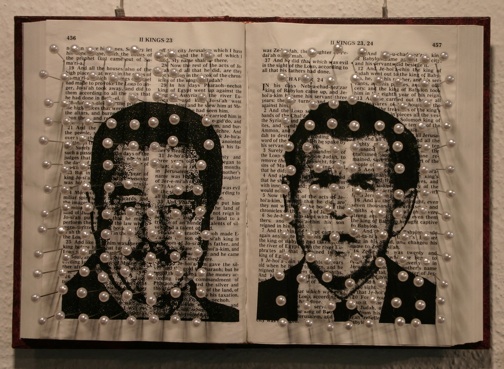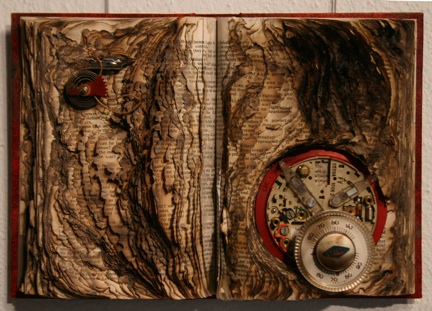Embedded
Jun 3–26, 2010
Image Gallery



Embedded
Jun 3–26, 2010
June 3 – June 26, 2010
Gallery 4
Featuring Linda Lewis
BIOGRAPHY:
Linda Lewis received a Master of Fine Arts in 1997 from Arizona State University. The School of Art awarded her the Nathan Cummings Foundation Fellowship for her artwork. While still a student, Lewis received a Fulbright Scholarship to conduct research at the Danish Design School in Copenhagen, Denmark. Since graduating, Lewis has built an extensive exhibition record that includes national and international exhibitions, including solo exhibitions at the Bath House Cultural Center in Dallas, Texas, the University of Arizona and Appalachian State University, Boone, NC,. Juried group exhibitions include “Lace for Fashion,”at the Powerhouse Museum in Sydney, Australia and The 5th International Textile Competition ’97 in Kyoto, Japan. Lewis has had articles and reviews published in the Surface Design Journal, Fiberarts and American Craft. An exhibition she curated, “In Stitches: Humor in Contemporary Fiber Art,” was exhibited in a variety of venues throughout Arizona and the United States. Lewis currently resides in Edinburg, Texas.
ARTIST’S STATEMENT:
I create my body of work from books and paper with printed text and found objects (typewriters, vacuum cleaners, desks, faucets, hair, plastic babies, to name a few). For a recent series, the books retained their original shape, but were altered by my “embedding” objects in them. In my two-dimensional work, dictionaries, history books, and personal papers are taken apart and the pages machine stitched end to end to form large surfaces. I machine stitch a small grid over the entire surface, and then dye or stain and distress it. The result is a lacy fabric that casts a shadow onto adjacent surfaces. Air currents cause the panels to shift and rustle.
My conceptual concerns are rooted in my interest in the history of ideas and the development of ideological systems. Books are a concrete physical manifestation of ideas that have become ideological systems. As an artist, I enter into the dialogue by deconstructing the text physically and figuratively. This reflects the negotiation through social and ideological constructs that must occur in order for change to take place within any system of ideas. Although the two-dimensional artwork looks fragile and diaphanous, it has reached this state through a destructive process, reflecting the often difficult and violent process of social negotiation. The words and ideas are broken down and begin to disintegrate. While remnants of the original words remain, the fabric has been transformed and something new has emerged.